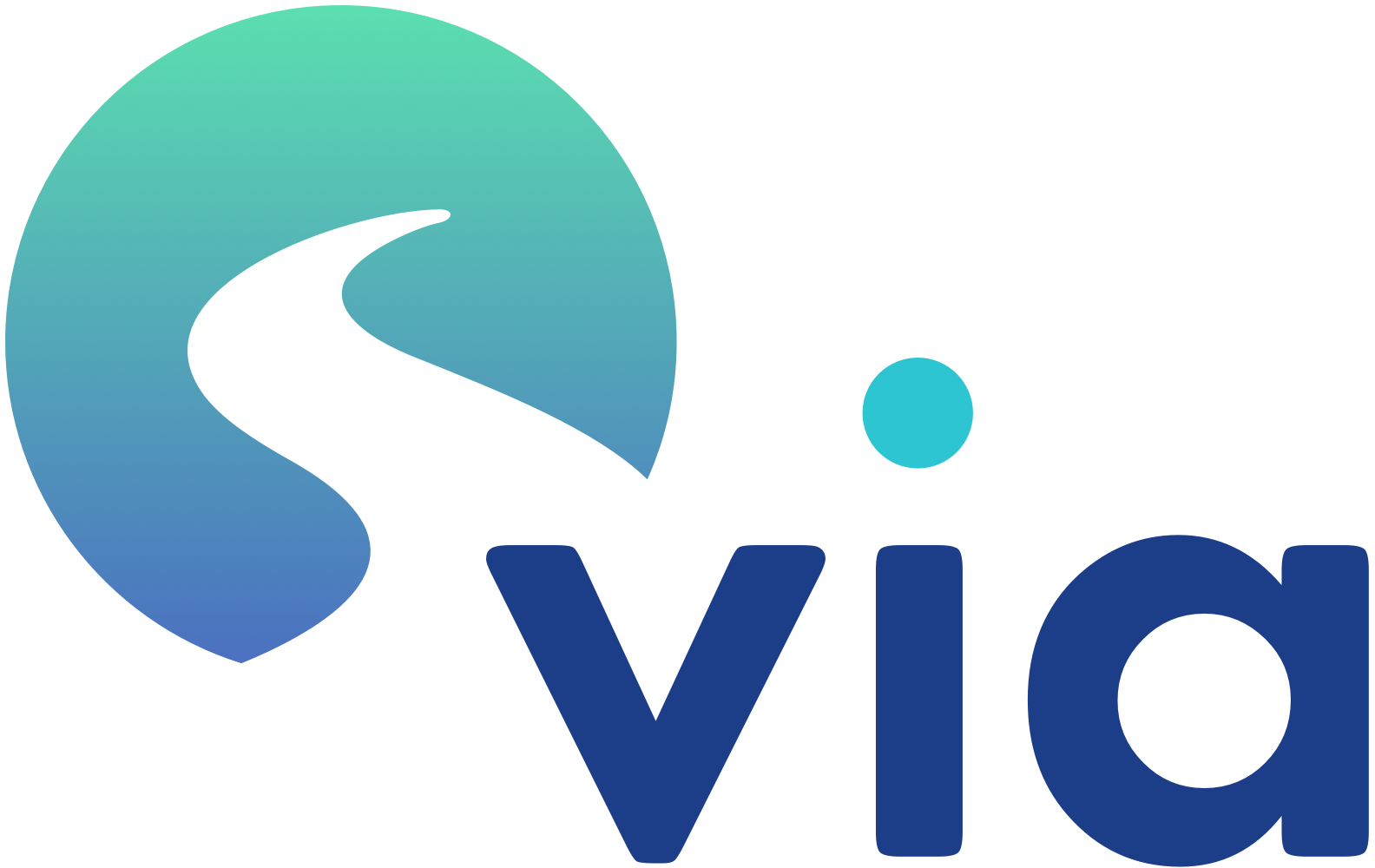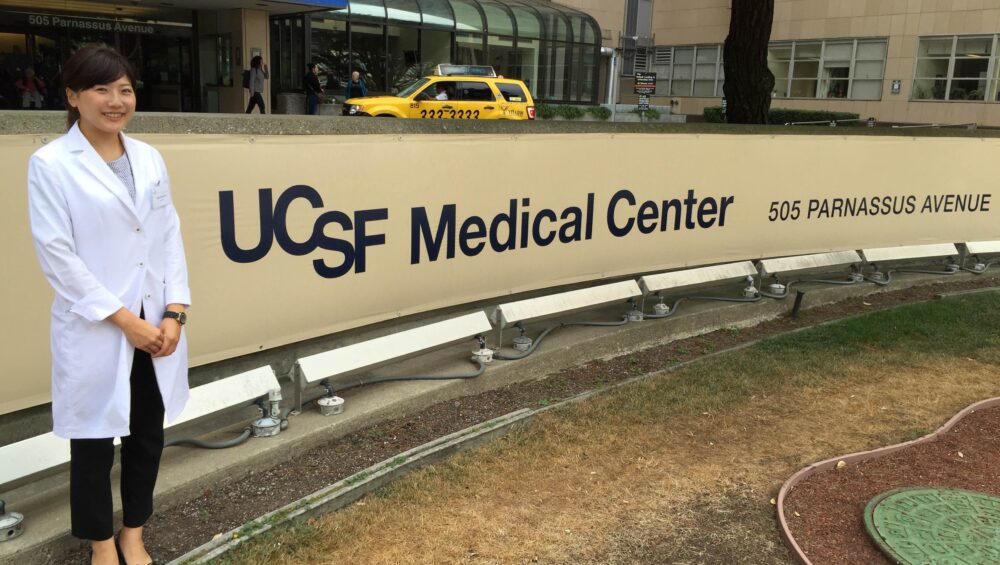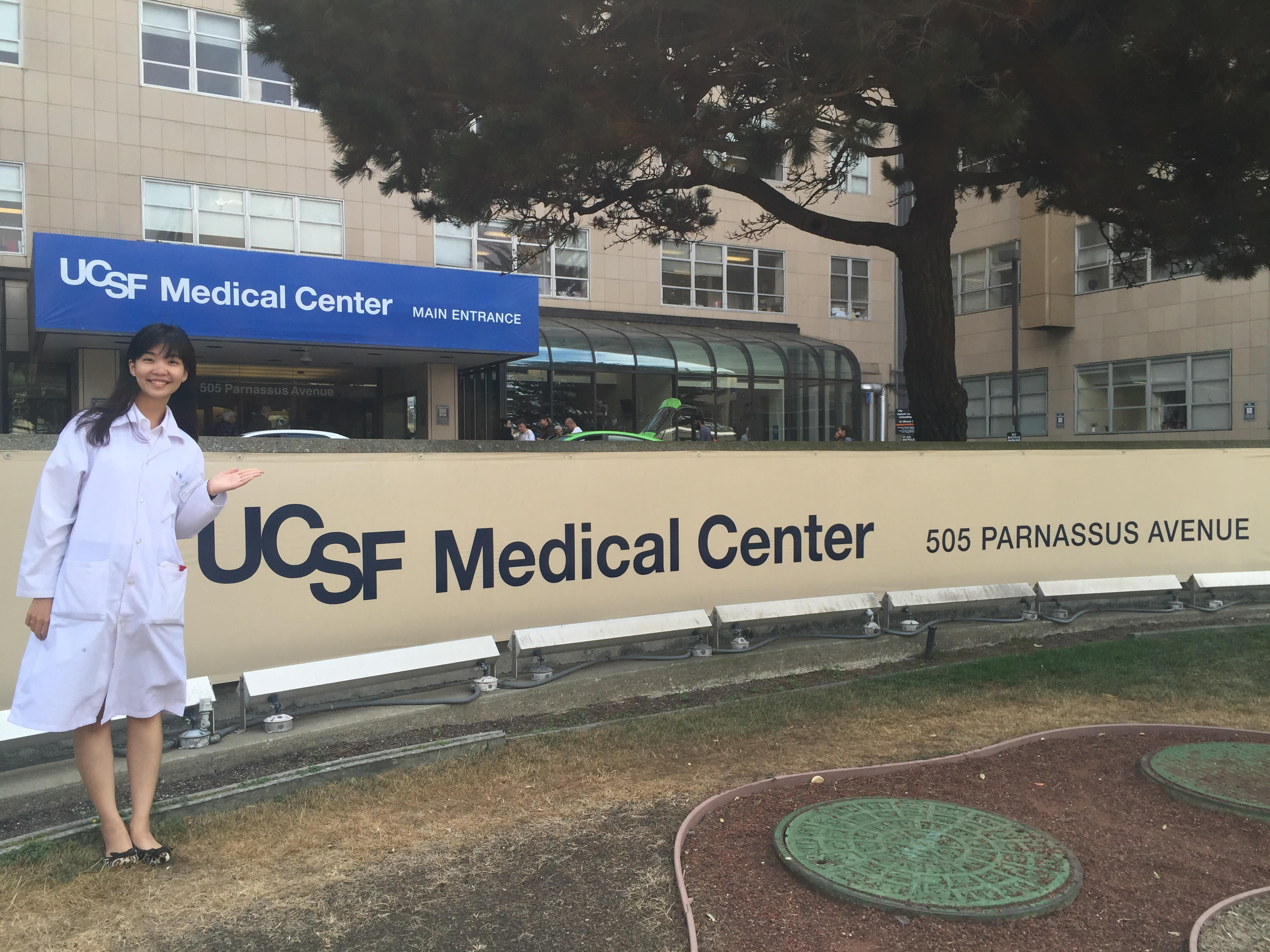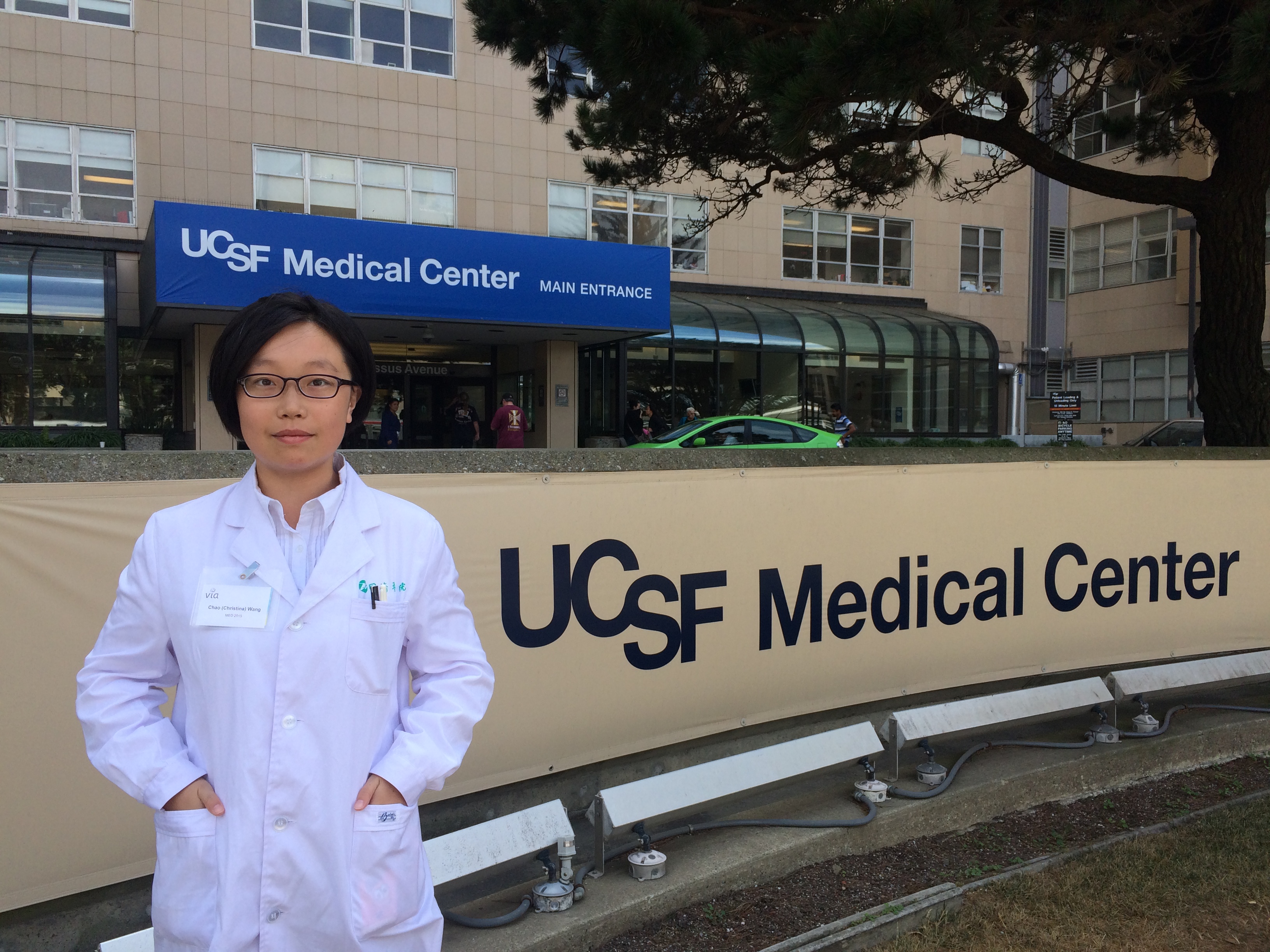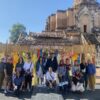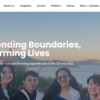Hanae Nakashima
Hi everyone, I’m Hanae Nakashima. I am excited to share my shadowing experience with everyone. Shadowing had been the most interesting program for me from when I decided to participate in MED program. And actually it was the most exciting one. I will explain what I saw there in second paragraph, and what I felt as a difference to our country in third paragraph.
First, I will write about what I saw. At 8:30 a.m. we all participants were separated individually and I was introduced to one of the attending doctors. I followed her and her team during the shadowing. The team was one of the general internal medicine teams. I heard that UCSF usually had about 6 teams in this department and each team had 5-6 doctors in average. Usually, the members are composed of 1-2 attending doctors, 2-4 residents, and 1-2 student doctors, I heard. Student doctors indicates third and fourth grade medical students. After the introduction, I attended a group meeting. In the meeting, information about all patients whom the team had was shared with each other, especially about SOAP (subjective data, objective data, assessment and plan). Then we moved on to the rotating, in which we met all such patients and did interview and also physical examination. However, I heard residents and student doctors had already finished such examination before the morning meeting. Each doctor did their presentation about the responsible patient in front of the patient’s room, and then we entered in the room. If the patient could not speak English, student doctor called to “UCSF interpreter” and, through speakerphone, doctors communicated with such patients. We also had a meeting with “case manager” and “social worker”. I could not thoroughly understand what they were discussing about, but I realized that such staffs who were not doctors had also the equal rights to suggest their opinions aggressively. After rotating, they arranged the progress note or orders on the electronic medical record.
Second, I mention about what I thought through this experience and felt as a difference. Totally, what I saw in the shadowing was almost equal with the morning rotation in Japan. However, I was surprised at some points. One of them was that there were several teams including social workers and care managers, and each team took care of different patients. In Japan, all of the patients’ information in some department is shared with all doctors and students. So such rotating is held with all doctors. I always think that it is not efficient because of the limited space for all participants, so the rotation with small numbers of doctors seems to be successful. Also, compared to UCSF, doctors in Japan usually do not share such information during a rotation with the other medical members like nurses, pharmacists, nutritionists. Another surprising point was that the attending doctor enthusiastically listened to the third year medical student’s suggestion and they discussed about assessment and plan together. The medical student was so aggressive that he seemed to be one of the team members. Japanese medical students are usually just observers and attending doctors are less motivated to listen to our suggestion. However, it may be a matter of academic level, considering that third year medical students in the U.S. are equivalent with first year residents in Japan. Now I think that these two differences are smaller than I expected and each system has both advantages and disadvantages. I cannot realize this if I did not experience the shadowing. This experience was very precious one to me.
Shiori Suzuki
I shadowed at UCSF Parnassus on August 20, 2015. I was really looking forward to shadowing, and it was one of the most impressive experiences for me. Though I’ve experienced shadowing in the clinical clerkship in Japan, this shadowing was special for me.
There were many differences in shadowing between in Japan and in the US, such as system of ground round, the way of manipulation and education system. What I found interesting the most was education system for medical students and doctors. In Japan, medical students have little chance to speak or discuss. Compared to it, I think it’s good that medical students in the US have a lot of voice for patients’ care. I also attended a lunch lecture. On the topic of the agreement about life-prolong treatment, I was surprised when the moderator gave us time for discussion.
I learned that my clinical clerkship in Japan can be more interesting and it depends on my effort and the systems we’ll make. I’ll never forget the passion of medical students in US and I want to make the system of Japanese clinical clerkship better in the future.
Yi-Chen Samantha Huang
I shadowed at UCSF parnassus campus in the department of internal medicine on August 18. This is my first shadowing experience. Before shadowing, I was so nervous that I could not understand what doctors were talking about and didn’t have enough knowledge of internal medicine. However, after meeting with the medical team, they were all so nice and kind so that my anxiety was relieved. During shadowing, I saw many interesting things that I would like to share with you guys.
In my medical team, there were 6 members including one attending doctor two residents, one intern and two medical students on that day. The most impressive thing I saw is that when seeing a patient, the doctors in the team from attending doctors to medical students all kneeled down or sat down to talk to patient. I think this makes the patient feel less pressure and their sound to be heard. During the shadowing, there was an old lady and she tried to talk about her terrible experience in the hospital she have been to. After listening to her stories, the attending doctor tried to comfort the patient. This bedside manner also impressed me. When they leaved, they would either shook hands or hugged the patient. What I see in the most hospitals in Taiwan, doctors or their medical team will stand around the patient when visiting them. This constructs the groove between doctors and patients.
Another interesting thing is how they interact with each other. I didn’t see any hierarchy between them. Whether medical students or intern are always feel free to ask questions. Their senior won’t deny medical student’s answers or arrangements only because they are still students. Before they go into the ward to see a patient’s situation, the will discuss together. Attending doctor will teach them on the way to the next patient. Medical students not only observe but also need to be in charge of some patients. This is a great way to improve clinical English.
As learning from this unforgettable shadowing experience, I really want to share these experiences to my friends in Taiwan. I hope one day in the future, I can become a doctor who thinks highly of their patients.
Chao Christina Wang
On Aug 18th, 2015, I got the opportunity to shadow with a medical team at University of CA – San Francisco (UCSF) Parnasses Campus, which was such an inspiring experience I never expected before.
The well organized medical team I shadowed with included a team for ward rounds, nurses, case managers and social workers. The ward rounds team was composed of an attending doctor, a resident, a medical student and a pharmacist student. Medical student and resident doctor reported patients’ condition to attending doctor who will make treating decisions. The ward rounds team gave reflection to nurses, social workers and case managers and they will collaborate together to support inpatients. The rounds team checked 14 inpatients in the morning, which was similar to Chinese team, but here they concentrated and communicated more with patients. Based on my experience of shadowing in China, I did not find such kind of collaboration with case managers and social workers. I think the collaboration is a key to run the hospital smoothly and efficiently. Doctors can really focus on curing patients rather than worrying and solving social problems. In my opinion, being busy is not an excuse to show less sympathy. Professional supporting team and emphasis on sympathy can develop a close relationship between doctors and patients.
Humanistic care I observed during shadowing impressed me most. Doctors knocked every door and asked “May I come in” before they entered the ward. They greeted and shook hands with patients, and even introduced me to them like “This is Christina, a visiting student from China”. I was surprised by that and had no idea how to response politely and professionally because I have never been introduced to patients when I was shadowing in China. The doctors washed hands before and after visiting a patient. They squatted down and talked with patients who were lying on bed. They pulled curtains before checking patient’s abdomen and helped to move the patients to a comfortable position after checking. They asked patients very specific questions including diets, emotional feelings as well as basic physical conditions. They allowed patients to finish their complaints and began talking with “I am sorry about your shoulder pain” or “I am sorry you had to experience that”. Further, they allowed questions and explained in details. The resident even took out his iPad and showed a professional picture to illustrate his opinion. When they had to finish the conversation, they would say “I have to go to next patient. I will come and see you later.”
The hospital devices in UCSF were pretty fancy for both patients and doctors. For patients, they did not have to share their ward with other patients and each ward possessed beautiful scenery of mountains and forests. I also found an office for interpreters, which I think was necessary to patients who did not speak English. For doctors, the hospital made good efforts to protect them from infectious diseases. The soap dispensers allow hospital staff to frequently wash their hands everywhere. Yellow protecting coats, gloves and masks costing seven dollars were necessary for each single visit to possible infectious patients. Every ward was equipped with a computer and doctors can log in with their ID card to check updated data. They were holding a medical conference at lunch time every day. I attended their medical conference on Inflammatory Arthritis. Even though I did not understand the topic, I think it can be a good method to keep clinical doctors updated with new information, and can be a good platform to share experience and opinions.
Shadowing in hospital was absolutely a highlight in this program, which offered me precious chance to expose myself in clinical English surroundings. I would like to express my sincere thanks to VIA for organizing this part in program. And I do appreciate the medical team I followed. They talked very fast and sometimes not clearly enough for me. But they tried so hard to make me follow up and encourage me to ask questions.
There are two suggestions I want to share with other participants. Firstly, doing research about the hospital and department you are going to shadow in can be of great help. If possible, try to prepare deep insight questions before coming. Secondly, keep confidence on your ability and do not give up. You may lose yourself in certain terms when doctors are discussing but you can get general ideas. General ideas can benefit you a lot and provoke you to think deeply.
